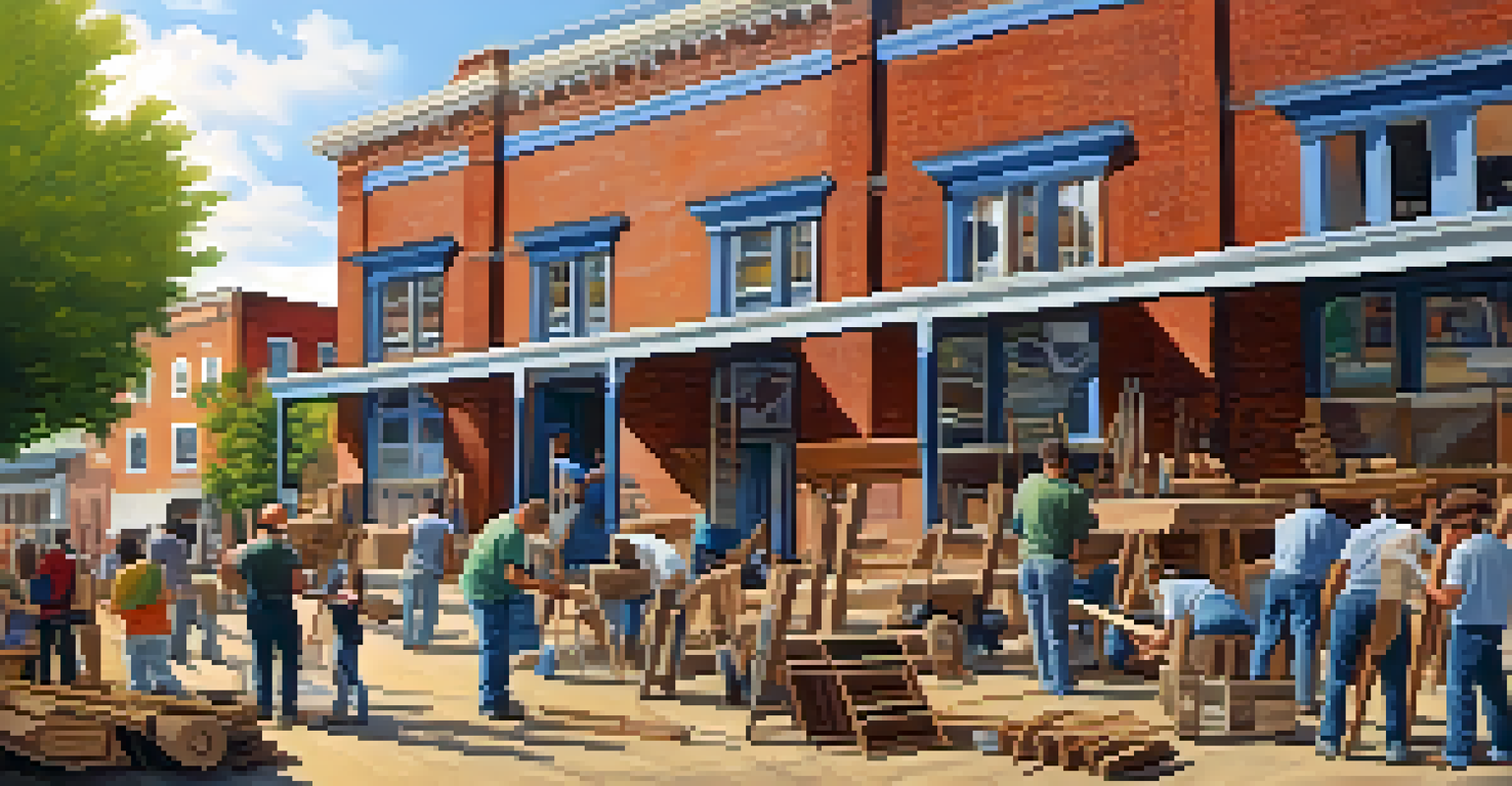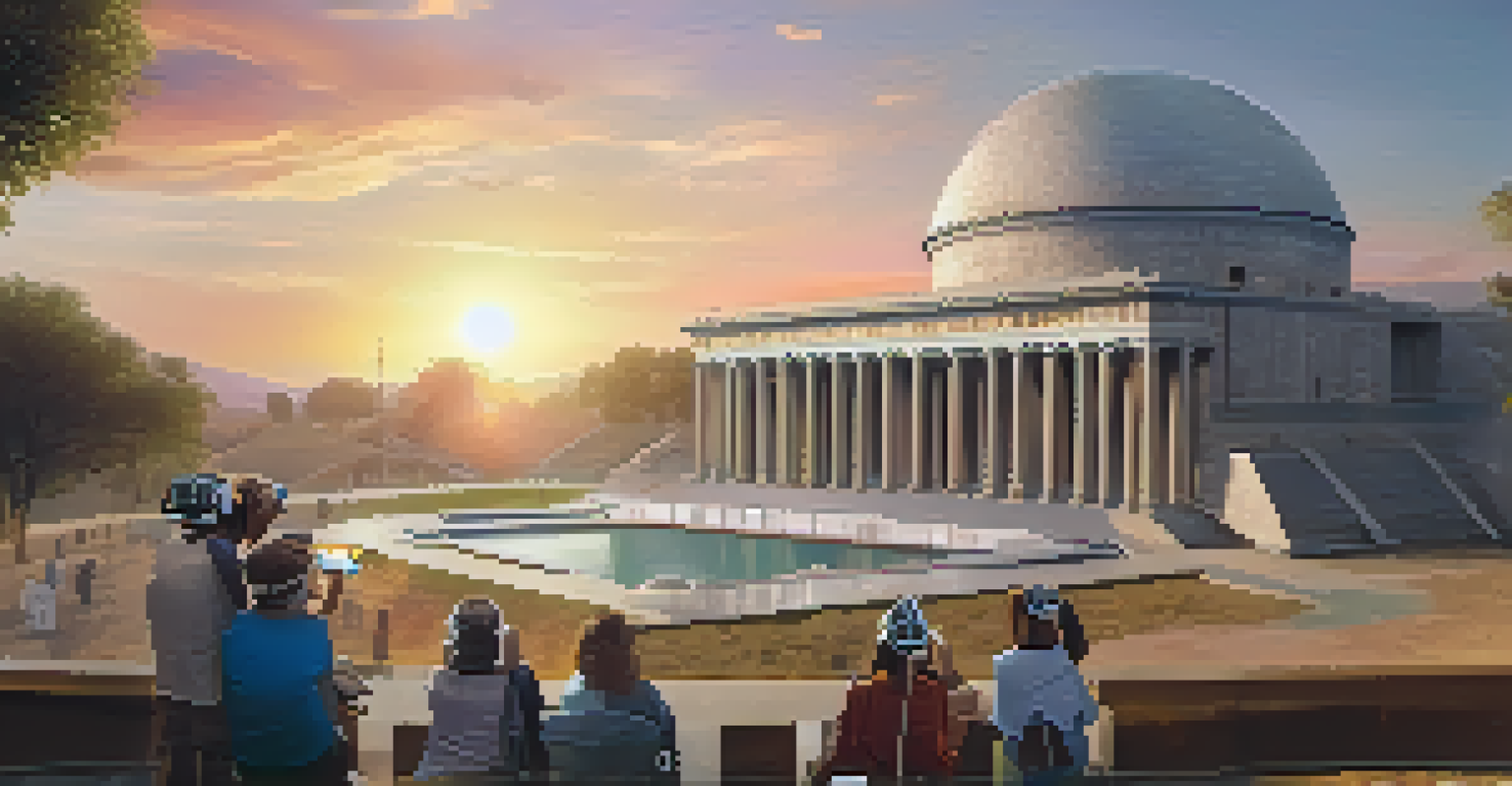Innovative Techniques in Historical Preservation Practices

The Role of Technology in Historical Preservation
Technology has revolutionized how we approach historical preservation. From 3D scanning to virtual reality, these tools allow us to document and restore sites with unparalleled accuracy. Imagine walking through a historical site from the comfort of your home, thanks to immersive digital recreations.
Preservation is a conversation between the past and the future.
These advancements not only help in preserving the physical aspects of history but also play a crucial role in education. Students and enthusiasts alike can explore ancient civilizations or architectural wonders without the limitations of geography. This accessibility opens up a world of learning opportunities for everyone.
Moreover, technology aids in the conservation process itself. Drones, for instance, can survey hard-to-reach areas, providing detailed data on structural integrity. This proactive approach ensures that preservation efforts are timely and effective, reducing the risk of irreversible damage.
Community Involvement in Preservation Efforts
Community involvement is vital in historical preservation, breathing life into projects and fostering local pride. When residents take an active role, they not only protect their heritage but also create a sense of ownership that can lead to sustainable practices. Think of local volunteers restoring a historic building—it's not just about bricks and mortar; it’s about stories and connections.

Engaging communities often leads to innovative solutions tailored to local needs. For example, neighborhood groups may organize fundraising events or educational workshops, ensuring that preservation efforts align with community values. This grassroots approach can be far more effective than top-down directives.
Tech Enhances Historical Preservation
Innovative tools like 3D scanning and virtual reality transform how we document and restore historical sites, making them more accessible for education.
Furthermore, involving the community in preservation can inspire future generations. Children who participate in local restoration projects are more likely to appreciate their heritage and advocate for its protection. It’s a cycle of learning and love for history that can last a lifetime.
Adaptive Reuse: Breathing New Life into Old Structures
Adaptive reuse has emerged as a popular technique in preserving historical buildings while meeting modern needs. This approach involves repurposing old structures for new uses, ensuring that they remain functional and relevant. For instance, an old factory might be transformed into trendy lofts or commercial spaces, bridging the gap between past and present.
History is not a burden on the memory but an illumination of the soul.
This method not only conserves the physical structure but also preserves the stories embedded in its walls. By maintaining the original architecture, we can create spaces that honor history while serving contemporary purposes. It’s like giving a beloved book a new cover but keeping the same cherished story inside.
Additionally, adaptive reuse promotes sustainability by reducing the need for new materials and minimizing waste. It’s an eco-friendly solution that respects the environment and our cultural heritage simultaneously. In a world increasingly focused on sustainability, this practice stands out as both practical and meaningful.
Using Data Analytics to Enhance Preservation Strategies
Data analytics is becoming an essential tool in the field of historical preservation. By analyzing various data points—such as visitor statistics and structural assessments—preservationists can make informed decisions about where to focus their resources. It’s akin to using a map to navigate through a complex landscape, ensuring that every effort is strategically placed.
These insights can help prioritize projects, identify potential risks, and even forecast maintenance needs. For example, if data shows that a particular site is experiencing increased foot traffic, preservationists can implement measures to protect it from wear and tear. This proactive approach can prolong the life of historical sites significantly.
Community Drives Preservation Efforts
Active community involvement fosters local pride and sustainable practices, ensuring that historical preservation aligns with the values of residents.
Moreover, data-driven decision-making can enhance funding efforts. By presenting compelling evidence of a site's significance and the need for preservation, organizations can appeal to potential donors or government grants. It transforms preservation into a more systematic and compelling narrative.
Integrating Art and Culture in Preservation
Integrating art and culture into historical preservation can create a richer experience for visitors and communities alike. This approach emphasizes the importance of cultural narratives, ensuring that preservation efforts reflect the diverse stories of a community. For example, murals or public art installations can breathe new life into historic neighborhoods.
Art can also serve as a means of storytelling, illustrating the history and significance of a site in an engaging way. Imagine walking through a preserved area and encountering an interactive art piece that invites you to learn more about the history behind it. This fusion of art and preservation captivates audiences and fosters a deeper connection to their heritage.
Additionally, involving local artists in preservation projects can help maintain cultural relevance. By allowing contemporary voices to contribute, we ensure that preservation is not just about maintaining the past but also about celebrating the ongoing story of a community.
Educational Programs Supporting Historical Preservation
Educational programs play a crucial role in historical preservation, equipping individuals with the knowledge and skills needed to preserve their heritage. Workshops, classes, and internships can teach everything from restoration techniques to the legal aspects of preservation. By fostering a knowledgeable community, we ensure that preservation efforts are both effective and sustainable.
These programs can also inspire passion for history among younger generations. When students learn about their local history and how to preserve it, they are more likely to become advocates for its protection. It’s like planting seeds of curiosity that can grow into lifelong commitments to heritage conservation.
Education Fuels Preservation Advocacy
Educational programs equip individuals with the skills to preserve their heritage, inspiring future generations to advocate for historical conservation.
Moreover, educational initiatives can help bridge gaps between professionals and the community. By collaborating and sharing expertise, preservationists can empower locals to take an active role in safeguarding their history. This partnership can lead to innovative ideas and strategies that are deeply rooted in community values.
The Future of Historical Preservation Practices
The future of historical preservation practices looks promising, with a blend of tradition and innovation driving the field forward. As we embrace new technologies and methodologies, we can adapt to the changing needs of society while preserving our cultural heritage. This balance between the old and the new is essential for sustainable preservation efforts.
Moreover, the growing awareness of cultural heritage's importance means that more people are getting involved in preservation efforts. Communities are recognizing that their history adds value to their identity and economy, leading to increased support for preservation initiatives. It's an exciting time to witness this shift in mindset.

Looking ahead, collaboration will be key. By working together—be it across disciplines, communities, or organizations—we can create comprehensive strategies that ensure our history is preserved for generations to come. The future is bright, and with innovative practices, we can confidently safeguard our past.